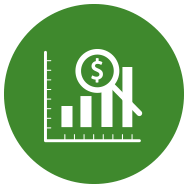Cost & Quality Problems
Aging of the Population
Strong evidence demonstrates that the overall aging of the U.S. population is a minor driver of health care cost growth, contributing only half a percentage point to overall growth in health care spending which averages 5-7% a year.
While it is true that the population of the United States is aging and also true that older people have higher health care costs than younger people, the aging of the population is too gradual a process to rank as a major cost driver in health care.
Total health expenditure per capita costs have increased between 5 to 11 percent per year for decades but aging demographics have contributed less than 0.5 percent each year to that growth.1 Looking ahead, the additional demand for care caused by the aging U.S. population is expected to remain only a modest contributor to health care spending growth during 2012-2030 when the baby boomer generation ages into retirement.2
Notes
1. Uwe E. Reinhardt, "Does the Aging of the Population Really Drive the Demand for Health Care?" Health Affairs, Vol. 22, No. 6 (2003); see also Yamamoto, Dale H., Care Costs -- From Birth to Death, Health Care Cost Institute, (June 2013).
2. Reinhardt (2003).






